By Iric Nathanson
Portraits of two distinguished gentlemen flank the main exit at Dowling Community School. Both are wearing high starched collars and bow ties. On one side, William Eustis looks out with a faint smile. On the other side, Michael Dowling’s profile has a more serious appearance. Both men are long gone, but their presence is still being felt at the South Minneapolis school, now celebrating its 100-year anniversary.
The story of the two civic leaders and their efforts to overcome childhood disabilities provides the foundation for a community institution originally known as the Michael Dowling School for Crippled Children. Dowling lent his name to the school when it was established in 1920 in a North Minneapolis church.
As a youngster, Dowling suffered severe frostbite after being caught in a winter storm. Both of his legs below the knee were amputated along with most of the fingers on his right hand and his left arm below the elbow. Despite his disabilities, the school’s namesake created a successful political career for himself, serving in the Minnesota House of Representatives and rising to the post of Speaker of the House.
“I believe I have proved that being a cripple is more a state of mind than of body,” Dowling once said. “There is only one really insurmountable handicap and that is the loss of the inner power we call the mind.” The much-admired civic leader was able to visit the North Minneapolis school soon after it opened in 1920, but he died in 1921 before the school relocated to South Minneapolis.
William Eustis, then in his 70s, was still immersed in civic causes when the new Dowling School at 3900 West River Parkway opened in 1924. A wealthy civic leader and former Minneapolis mayor, who was himself, crippled, Eustis donated the land for the new school building and paid for its construction.
Unlike many wealthy philanthropists at that time, who had little personal contact with the people and the causes they supported, Eustis often visited Dowling and made friends with the children who attended the school.
When Eustis died in 1928 at the age of 83, Dowling students were saddened by his passing, according to the Minneapolis Journal. “The boys and girls ... mourned the dead philanthropist as they would one of their own playmates”
“I am so sorry he died, so so very sorry,” said eighth grader Helen Babcock, who cried when she heard the news about Eustis’s death. “He was an awfully nice man. He was really our friend and we all felt that he liked us. We were grateful to him for giving us the school and we knew he was interested in us. We will miss him so much.”
“We fellows all liked him,” added Albert Abdallah. “He used to come to our Christmas parties. It won’t seem the same without him. He was awfully nice to the boys and girls at Dowling.”
As the Depression of the early 1930s deepened, Dowling was able to tap federal Works Progress Administration funding to build a new therapeutic swimming pool. The pool’s completion in 1936 represented a high point in the school’s history when President Franklin Roosevelt and his wife Eleanor came to Dowling to dedicate the new WPA project. The school newspaper, the News Reel, reported on the “great excitement as the hour of the President’s arrival grew near. Suddenly crowds for blocks down the street began to shout, The President has arrived!! As the car with Mr. and Mrs. Roosevelt drove on to the grounds, reporters and photographers gathered quickly. The President and his wife gave all their attention to the Dowling children who waived continuously at them.”
Dowling student Martin Croze gave a short speech welcoming the President and Mrs. Roosevelt, as Mavis Wittman presented a corsage to the First Lady. In a brief talk to the crowd gathered on the school grounds, the President made an oblique reference to his own condition. Turning to the children, he said, “I hope you will all learn to swim in this fine pool. Swimming, as you know, is the only exercise I can take.”
With the Depression giving way to World War II, Dowling students were involved in the war effort, doing their part by working in the Junior Red Cross and buying and selling war stamps.
In 1942, the undeveloped west end of the Dowling site was converted to a victory garden. The community garden on 46th Avenue was part of a national movement to promote small urban plots where families could grow their own fruits and vegetable to help offset a wartime food shortage. Over the years the Minneapolis School Board has eyed the Dowling Garden as potential site for a new public school, but the gardeners and their supporters successfully resisted those efforts. The Dowling Community Garden is considered the second oldest victory garden in the U.S. still in use today.
Over succeeding decades, the school expanded, adding two new classroom wings and an auditorium. At the school’s 50th anniversary in 1974, Dowling was still identified as a program for the physically handicapped, but that would soon change.
A dozen years later, in 1987, Dowling faced a turning point. That year the school took on a new identity. “For 60 years, Dowling has been a school for crippled children, but times have changed,” Elizabeth Johnson wrote in the Longfellow Messenger. “What used to be seen as a commendable program is now seen as segregation.”
The West River Parkway school would continue to serve children with special needs, but it would now become an Urban Environmental Learning Center. While new name became official in 1987, the change in the composition of the Dowling’s student body had been more gradual. With mainstreaming special needs children now a priority, non-handicapped children had been attending Dowling and some handicapped children who had been at Dowling were now at nearby public schools.
Dowling is no longer an urban environmental magnet but it has retained an emphasis on environmental learning, says Dowling Principal Kari Page. “The centenary anniversary gives our community an opportunity to celebrate the school’s achievements over the last 100 years. Dowling has always been an exciting and dynamic place. It has been a real privilege for me to serve as principal.This position has been the highlight of my career.”
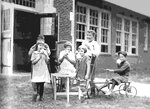

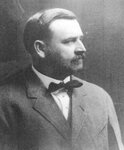
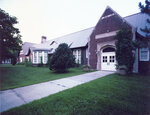
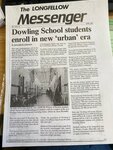
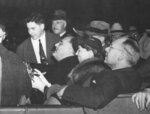

Comments
No comments on this item Please log in to comment by clicking here